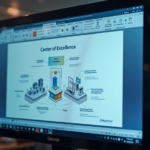Process Maturity Model
Effective listening, Efficient processes, and Ethical staff
Many business management systems use maturity models to improve products and services and compare organizations. I have used these principles with multiple clients producing a wide range of benefits. Any business change requires great communication, planning, and disciplined execution.
 To achieve substantive improvement in Sallisaw’s City Government, we must focus on listening, efficiency and quality by developing capable staff, and fostering a culture of continuous improvement. We should emphasize flexibility and innovation to enhance customer service, reduce costs, and respond effectively to unexpected circumstances.
To achieve substantive improvement in Sallisaw’s City Government, we must focus on listening, efficiency and quality by developing capable staff, and fostering a culture of continuous improvement. We should emphasize flexibility and innovation to enhance customer service, reduce costs, and respond effectively to unexpected circumstances.
Additionally, we should prioritize measuring outcomes, negotiating better deals, and use leading practices in shared services departments: Human Resources, IT, accounting, project management, and purchasing and procurement.
Example Benefits from Process Maturity
-
Improve Efficiency and Productivity
- Avoid big expenses by making small investments
- Handle important tasks before they become urgent
- Increase the speed of work without compromising quality
- Expedite the onboarding of new hires and recently promoted staff
-
Quality Integration and Improvement
- Incorporate excellence into the services provided
- Integrate quality into the processes
- Improve the quality of work without sacrificing speed
- Enhance customer service by implementing flexible standards
-
Risk Management and Fraud Prevention
- Minimize exception cases
- Reduce the risk of fraud, graft, and misuse of funds
- Identify the root cause of issues more easily
- Respond effectively to unexpected circumstances
-
Staff Development and Resource Optimization
- Develop a strong and capable staff
- Achieve more with the same number of people
- Maintain the same level of productivity with fewer employees
- Facilitate lateral moves for staff development
Process Maturity in Government
Maturity models are applicable in government but have yet to be attempted everywhere. Some exceptions include engineering-focused organizations such as NASA and the Armed Services.
 Bureaucracy gets in the way of most government organizations because they put out fires, resist improvements, or are just comfortable with the status quo. The people who DO the work often know how to improve the work processes they perform. Listening to front-line workers is imperative.
Bureaucracy gets in the way of most government organizations because they put out fires, resist improvements, or are just comfortable with the status quo. The people who DO the work often know how to improve the work processes they perform. Listening to front-line workers is imperative.
This page adapts the CMM and CMMI maturity model to evaluate (grade) the process maturity of a department (for example). The CMM is intended mostly for IT departments. Even so, I have found the model useful in several other circumstances.
Here, I present six ways to evaluate the “maturity” of a department or the entire city government:
- Process maturity
- Organizational maturity
- Performance maturity
- KPI maturity
- Process training maturity
- Process modeling maturity
Level 1 is the starting point. Level 5 is the best.
 Most of Sallisaw’s departments are probably at level 2 or 3. A reasonable goal would be to raise all departments to level three within one year of starting. The benefits would be efficiency, which would allow human resources (FTE headcount) to be reallocated to areas most in need.
Most of Sallisaw’s departments are probably at level 2 or 3. A reasonable goal would be to raise all departments to level three within one year of starting. The benefits would be efficiency, which would allow human resources (FTE headcount) to be reallocated to areas most in need.
Starting a process maturity effort would be a first-100-day effort.
Process Maturity
Level 1 – Undefined
This is when processes are currently manual and undefined.
Level 2 – Institutional Knowledge
This is when the knowledge of “how to do things” is held by individuals, and there is limited documentation available.
 Level 3 – Documented
Level 3 – Documented
This is when processes are documented but still with varying levels of understanding.
Level 4 – Documented and Outcome Oriented
This is when departmental and operational processes are aligned with customer expectations and business outcomes.
Level 5 – Proactively Managed
This is when the City Government’s processes are well understood, documented, and managed proactively across the organization.
Organizational Maturity
Level 1 – Silos
This is when an organization is made of functional hierarchy and silos.
Level 2 – Some Experts
This is when there are a few recognized people who are experts in an area.
 Level 3 – Designated Accountability
Level 3 – Designated Accountability
This is when there is clarity in process ownership – that is, clarity of accountability.
Level 4 – Process–Goal Alignment
This is when all of the main (core) processes are aligned and in-sync with organization goals.
Level 5 – Process-Organization Alignment
This is when the organizational structure alignes around core processes.
Performance Maturity
Level 1 – Performance manual & inefficient
Processes are currently manual and inefficient.
Level 2 – Few areas of optimization
Process optimization is focused within specific areas across the organization.
 Level 3 – End-to-end improvements made
Level 3 – End-to-end improvements made
Improvement efforts are geared towards end-to-end process enhancement.
Level 4 – Processes positively impact performance
Processes have a significant impact on organizational performance.
Level 5 – Processes optimized and adapt to circumstances
Processes are optimized and are considered a competitive advantage by the organization.
KPI Maturity (Key Performance Indicators)
Level 1 – Tasks performed
Task-oriented KPIs.
Level 2 – Qualitative KPI
Initiative process KPIs are tracked intuitively and qualitatively.
 Level 3 – Organization-wide
Level 3 – Organization-wide
Process KPIs are implemented across the organization.
Level 4 – Quantitative and integral
KPIs and measurement is an integral part of the management processes.
Level 5 – Performance culture
Performance measurement is ingrained in the culture, facilitating continuous improvement.
Training Maturity
Level 1 – Nonexistant
Level 2 – Awareness & limited tools
Awareness of skills and gaps, limited tools and methodologies in place.
 Level 3 – Defined process training program
Level 3 – Defined process training program
Level 4 – Broad-based process training in place
Level 5 – Process excellence culture
Process excellence is intentionally integrated into the culture.
Modeling Maturity
Level 1 – Paper
Level 2 – Basic
Basic documentation tools.
 Level 3 – Centers of Excellence
Level 3 – Centers of Excellence
Level 4 – Rule Management
Level 5 – Real Time
Systems and structures are in place to adjust processes in real time.